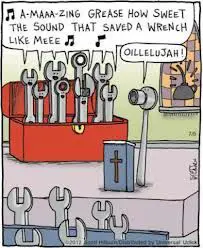I can sum up what I am going to say in this blog in two words. Saint Pancras. When we learn a language, we learn that there are three tenses - past, present and future. The past is fixed. The present is an instant, that slips into the past and becomes fixed before you can do too much about it. It is only our future that we are the master of. I was discussing education with my Father once. I was failing badly at school and he tried to give me a pep talk. He said "Your past is your toolkit, your present is your canvass and the future is your artwork". I didn't really understand what he was on about, much to his annoyance. I have come to appreciate his words.
When lockdown ended, the first thing we did was hop on a Thameslink train to St Pancras, for a walk around the area. We were lucky to find a table at the Lighterman pub, after a walk around coal drops yard. Every time I walk through St Pancras, I have a sense of deep wonderment. People always think of the Sir Gilbert Scott's mock Gothic hotel, which is the facade. To me this is not the impressive bit. The really impressive bit is Barlow's engine shed, painted in Midland blue. When the sun shines through, it really is the most glorious building. A suitable place to arrive from Paris. Together they make up what I believe is one of the finest buildings in London, worthy of a visit on its own merit.
But it was not always so. Back in 1977, I did a school project on the building. I had a tour from an elderly BR employee, a few months off retiring. The station was caked in grime. What is now the magificent hotel was then a store for Travellers Fayre coffee. There were signs of its former magnificence all around, drenched in decay. British Rail had wanted to demolish the whole thing and build a nice new modern station along the lines of Euston. Sir John Betjeman lead a campaign to save it. BR lost, but as they often did, exacted an awful revenge, letting the station rot. Betjeman recognised the magnificence of the building, but could do nothing about the blinkered people running our railways.
My tour let me see the amazing intricacy of the tiles, wood and stone carvings, the iron work in the hotel. I also learned that Barlow's train shed was the largest cast iron single arch structure in the world when it was built. The station also had an undercroft. Originally used to store goods, especially beer from Burton on Trent. In the 1970's it was used for valeting taxi's. My guide told me that sooner or later, the BR board would find a way and an excuse to knock it all down. It seemed like a terrible shame. The photo's in this tweet captures the run down magnificence of St Pancras in that era.
Neither my guide nor Betjeman could have forseen what actually happened. The channel tunnel was build and St Pancras was transformed into a station without parallel. Barlow's shed roof was repaired, renovated and repainted. WIth cleaned glass and a repaint, we now apprecaite its magnificence. A century and a half of soot was removed, to reveal truly impressive Victorian ironwork. Scott's hotel was renovated and returned to use as a five star hotel with excellent restaurants and bars. The undercroft, formerly used to wash taxi's, became a thriving shopping mall. A statue of Betjeman was erected, looking up in wonder at the shed roof. The longest champagne bar in the world was installed next to the platform where impressive Eurostar trains arrive. The line to France is the fastest in the UK, the only purpose built high speed railway line in the UK. A fitting terminus for our only railway line to a foreign land.
So what has all this to do with the past, present and future? Well St Pancras is the perfect illustration of how you can take the past and transform it into an exciting and magnificent vision of the future. A casual passenger with no idea of the history of the station will simpy arrive and see a well used, well designed, impressive transport hub. The huge, bright expanse of space may be missed in the excitement of the start or end of a journey, but many look up in wonder at the amazing Victorian Architecture and appreciate how well it has been adapted to the purposes of 2021. The whole area around the station has received a huge lift, formerly it was a sleazy space frequented by drug pushers and street walkers. There are some amazing buildings, that previously people would not bother looking up to appreciate, due to the oppressive nature of the area that are now once more being properly appreciated.
Over the course of lockdown, I've been doing much housekeeping. Digitising my fathers old color Kodakchrome slides, listening to dusty old vinyl, researching the history of our locality, doing walks to look at crumbling edifices of a bygone era's. At first I enjoyed the opportunity to indulge in such activities, immersing myself in the past. There was not too much else to do. Now however, things are opening up. We need to start refocussing on the future.
There are two ways we can approach this. There is the approach of the old BR management, who wanted to knock down the magnifence of the past and build a new future, that will look great for a few years and then look tired old and dated, as Euston does now, with people forever bemoaning the loss of heritage and the failure to appreciate and adapt it. Or we could do what the people who put the Eurostar project and the Coal Drops yard development have done. They took the tool set that was bequeathed to them and the canvass in their hands and have combined old and new, preserving the best of the old and refreshing it with a big dollop of new.
Locally, The Railway Hotel in Edgware presents just such an opportunity. We've been campaigning to save it for the best part of six years.
There is no doubt that the current owners are sick to death of a grade II listed building. Like the old management of BR, they see it as an encumberance to their plans. I cannot believe that they cannot see the potential of such a magnificent Mock Tudor lodge. There is no doubt that the hospitality trade has changed since the heyday of the Railway in the 1980's, when people would travel from far and wide for a carvery and to use it as a wedding and party venue.
But there is still a huge demand for nights out in an amazing setting. People will pay a premium for such a wedding and party venue. I know all about renting space out. I own a music studio. An ever growing section of our business is based around parties, weddings an Bah/BatMitzvah's. Bands preparing music for them, relatives recording songs and making videos. This is a huge market in North West London and the Railway Hotel could be at the heart of it. At weekends and evenings, there should be a vibrant market for such a space. At other times, there is an opportunity to use function room space for all manner of other purposes, community groups, scouts, guides, self help, seminars etc. I believe that the modern hospitality industry winners are those who can get people in when the traditional drinkers and party goers are not around. Reuse the space, put in some low cost flats for key workers, to help make Edgware affordable.
This is just one example of one building. We have to be more imaginative. Barnet Council has become obsessed with the construction of luxury flats, that do not meet the needs of local people. We need more imaginative developments, but ones that make our enviroment better. If we have great facilities on our doorstep, that cuts the requirement for car journeys and pollution. In Kings Cross/St Pancras, there has been an emphasis put on making space for people. In Barnet we are cramming as many people as possible into every available space. Whilst this delivers short term profits for builders, it does nothing for the longer term goal of building sustainable communities and preserving good mental health for residents.
The bottom line is that the past is done, we cannot change it, but we can build a better future. We can either take our lead from exciting, well thought our developments that mix the best of old and new such as Kings Cross/St Pancras area or we can build a drab, soulless monoculture which will destroy our communities and mental health. If we want the former, we need good communal spaces, facilities and community organisations on our doorstep. These need space, good quality space where people feel comfortable. That is my vision for the Railway Hotel in Edgware and for the rest of Barnet. That is how we will deliver a future we can be proud of.
--------------------------------------------------------------------------------------------------
Roger Tichborne is the Liberal Democrat Candidate for Edgware Ward in the May 6th By Election. Roger has run Mill Hill Music Complex sudios since 1979. He attended Orange Hill School and as a teenager lived in Warwick Avenue, in Broadfields.
This article was published and promoted by Roger Tichborne on behalf of the Liberal Democrats, 29 Millway, London, NW7 3QR



